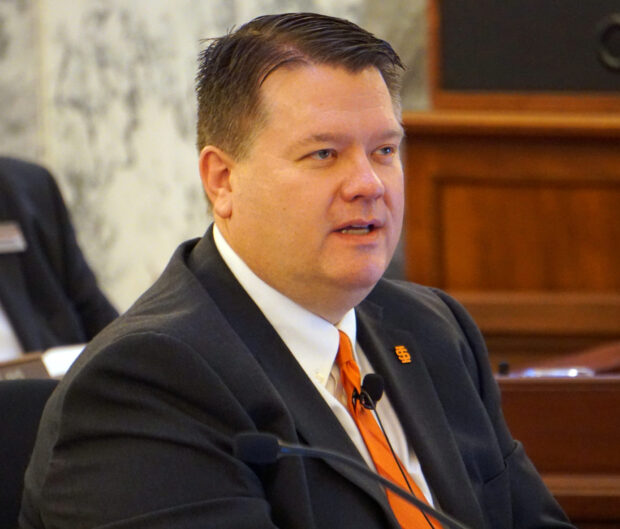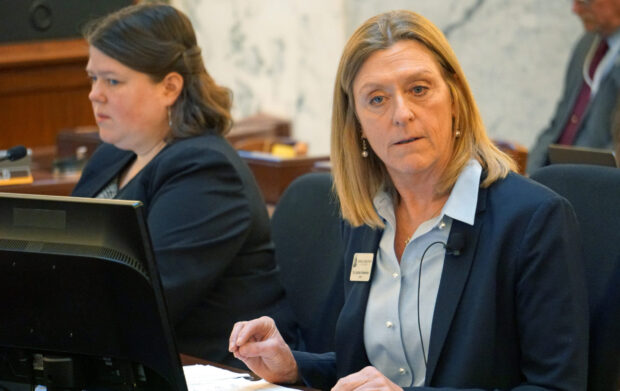A one-year tuition freeze is a step to make college more affordable, but Idaho needs to take a hard look at how it pays for higher education, Idaho State University President Kevin Satterlee said Tuesday.

“We have to come up with a system that we can all agree on,” Satterlee told legislative budget-writers Tuesday.
The budget meetings — continuing all week — are taking place as the state’s four-year institutions face a fiscal crossroads. Gov. Brad Little has ordered the state’s colleges and universities to cut their budgets. In Idaho State’s case, those cuts come to about $800,000 this year and $1.6 million next year. Meanwhile, the four-year institutions will freeze tuition for in-state undergraduate students next year, forgoing millions of dollars in the process.
Satterlee touted the tuition freeze, but he reminded Joint Finance-Appropriations Committee members that the move comes at a cost. Idaho State’s $150 million general fund budget essentially comes from just two sources — $82 million in tax revenues and $64 million collected from student tuition and fees.
“If we want to keep tuition low, we have to have a conversation about how those two interrelate,” Satterlee said.
After several years of declining enrollment, Idaho State logged a slight enrollment increase in 2019-20. But those numbers are mixed — undergraduate numbers dropped while graduate enrollment increased — and Satterlee has said it will take time to fix the enrollment problem.
Retention remains a challenge as well. For 2018-19, Idaho State’s retention rate was 63 percent, down from 72 percent three years earlier.
However, Satterlee pointed out that the university has shifted another $9.2 million into instruction and student services over the past three years, while its overall spending increased by just $4.4 million. It’s a conscious shift designed to support students and keep them on track for a degree.
“We have a moral imperative to help that student move through the pipeline to graduation,” Satterlee said.
Gov. Brad Little’s higher education budget proposal is virtually flat: a 0.4 general fund increase for the four-year institutions. But as she donned a Lewis-Clark State College construction hardhat for part of her presentation, President Cynthia Pemberton put in a plug for two line items in Little’s budget.
Little has proposed $6 million to build three regional career-technical education centers, including one at Lewis-Clark. He has also proposed $7 million in permanent funding for Idaho’s Opportunity Scholarship, after lawmakers approved a one-year spending increase a year ago.

”That makes a huge difference to the students we serve,” said Pemberton, pointing out that nearly half of her college’s students qualify for federal Pell grants.
For Lewis-Clark, Little’s budget cuts come to about $176,000 this year and $353,000 for the budget year beginning July 1.
Pemberton says she asked her administrators to prepare for cuts — drawing up budgets with reductions of 7 percent, deeper than the 2 percent cut that will go into effect next year. But she said it is impossible to cut the college’s budget without affecting staff.
“There will be very hard choices but we will be in position to meet those challenges,” she said.
During the Legislature’s “Education Week,” JFAC will spend five days reviewing K-12 and higher education budget proposals. The University of Idaho discussed its budget proposal Monday. The state’s community colleges will appear before the committee Wednesday, state superintendent Sherri Ybarra will discuss her K-12 budget proposals Thursday and Boise State University’s hearing is slated for Friday.
State Board appointment
In other action Tuesday, the Senate Education Committee voted unanimously to endorse the gubernatorial appointment of former state Sen. Shawn Keough to the State Board of Education.
Little appointed Keough to the State Board in September. Assuming her appointment is confirmed by the full Senate, Keough will serve a five-year term on the policy-setting State Board.
Senate Education introduces new bills
Working quickly following an afternoon of presentations, Senate Education introduced two new bills Tuesday afternoon.
The first, sponsored by Vice Chairman Steven Thayn, R-Emmett, would allow parents to negotiate flexible schedules for elementary school students who are one year ahead in their studies.
According to the bill, students would still need to attend at least 55 percent of the required school hours. But, if they meet conditions outlined in the bill, students could “have partial-day or full-day absences for the purpose of family activities, recreation, travel, and home-based educational activities.”
Sen. Jim Patrick, R-Twin Falls, sponsored the second bill, dealing with civics education. While current law requires students to pass a civics test before graduating high school, Patrick’s bill would make it so the Advanced Placement government and politics test would count as meeting that requirement.
The committee did not debate or discuss either new bill. But the vote to introduce them sets the stage for both to potentially return to the committee for a full hearing.
Idaho Education News journalist Clark Corbin contributed to this report.
